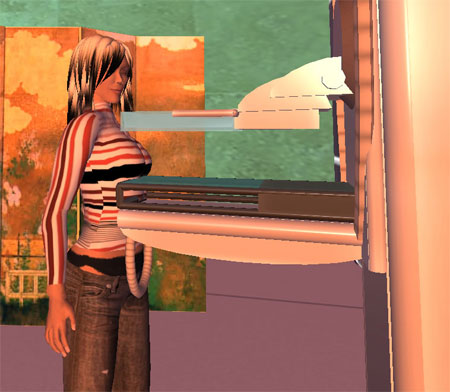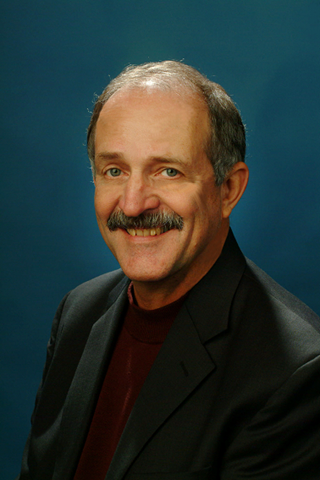SOME THINGS YOU MAY HAVE MISSED …
Research: VWs may help put you at ease
when dealing with your own health
 University of Toronto researchers put their avatar through
University of Toronto researchers put their avatar through
the paces of a virtual mammogram. Picture itbusiness.
Health researchers believe that the Web 2.0 world may be able to teach them something that the medical industry has never been able to master — the ability to make people feel comfortable and at ease when dealing with their own health, according to the Journal of Medical Internet Research.
“If you have to get a mammogram and you can walk through the process before it happens, it may help you get more informed and ask more reasonable questions of your healthcare practitioner,” Dr Jennifer Keelan, with the Dalla Lana School of Public Health at the University of Toronto, told itbusiness.ca, when discussing a University of Toronto study of healthcare activities in Second Life. “I’ve never been taught to do a breast self-exam before. I found it interesting as a woman to go through that exercise, and I think the detail was sufficient for a person to try in real life.
Authored by student Leslie Beard and supervised by Keelan, the study published in a recent Journal of Medical Internet Research, examined 68 virtual sites where health was being taught or supported and concluded that even if healthcare is conducted in a virtual world, it may have real world applications.
Of those 68 sites, 34 were taking part in health education or awareness raising activities just like The Women’s Health Center at the Ann Myers Medical Center, referred to by Keelan in discussing the mammogram, which although a virtual healthcare facility,has nurses and physicians who are real. They work here to reach out beyond the physical boundaries of the hospital and work past the innate discomfort of demonstrating good technique for self-examination mammograms.
“For many (medical) users, Second Life activities are a part of their Web 2.0 communication strategy,” the study said. ” The most common type of health-related site in our sample were those whose principle aim was patient education or to increase awareness about health issues. The second most common type of site were support sites, followed by training sites, and marketing sites. Finally, a few sites were purpose-built to conduct research in SL or to recruit participants for real-life research.”
“Studies show that behaviors from virtual worlds can translate to the real world,” the study concluded. “Our survey suggests that users are engaged in a range of health-related activities in Second Life which are potentially impacting real-life behaviors.”
Discover Magazine asks:
Can Training in Second Life Teach
Doctors to Save Real Lives?
Auckland University’s associate director of information technology Scott Diener (pictured right) gets a notable mention in Discover magazine’s report on virtual reality medical training programs which it says may bring big changes to the way health-care professionals learn their craft.
The article, among other things, looks at Diener’s virtual Auckland University Medical Centre, and specifically at a postpartum-hemorrhage simulation which has been operating since January for nursing students.
Quoting Diener, Discover notes that so far, around 20 students have used the simulation on Auckland University’s Second Life island of Long White Cloud, with overwhelmingly positive results.
“After they’ve ended the scenario, the faculty sits down and talks about their decisions,” Diener said. “From a learning perspective, it’s the post-scenario debriefing that does more for the students than anything else.”
Filed under: Education, Education in Second Life, Second Life, SL Medicine, Virtual Worlds | Tagged: Ann Myers Medical Centre, Dalla Lana School of Public Health, Discover magazine, itbusiness.ca, Jennifer Keelan, Journal Medical Internet Research, Leslie Beard, Long white cloud, Mammogram, Scott Diener, The Women's Health Centre, University of Auckland, University of Toronto, Web 2.0 | Leave a comment »


